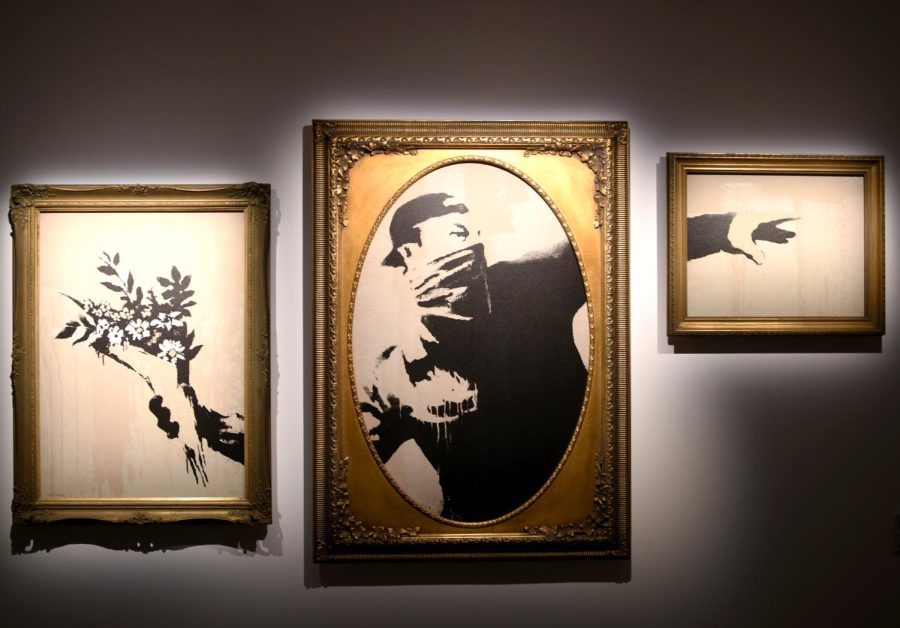Boston’s Banksy Exhibit Prioritizes Profit
What is more important, authenticity or exposure? The Art of Banksy certainly favors the latter. This exhibit in Harvard Square features over 100 original Banksy works that are allegedly worth 35 million dollars, all obtained from private collections. Banksy is a pseudonym for an anonymous British street artist known for his public graffiti. Infamously, his works communicate controversial messages regarding war, capitalism and imperialism.
The Banksy exhibit is a walk-through loop; when you head up the escalator, you’re first greeted by Banksy’s 2020 piece Welcome Mat. The entire opening is slightly underwhelming. A timeline of Banksy’s important publications and stunts, along with posters and prints from each, is displayed. Although it gives the viewer a better understanding of the artist, it’s not terribly interesting. The opening doesn’t give enough intriguing information to someone familiar with Banksy, and it also fails to provide enough information to someone new to his body of work.
Then, the exhibit moves on to the original prints of Banksy’s famous and lesser known works, including Pulp Fiction, Love is in the Air and many others. While there is significance to seeing so many of Banksy’s pieces simultaneously, seeing them in this setting provides little more value than one would get from viewing them online.
There were, nevertheless, some redeeming sections, One of the exhibit’s sections, “Street Souvenirs,” housed alternate versions of famous pieces and original sketches that had unfinished thoughts on front and back. You cannot experience these aspects of the exhibit online, so they make the experience a bit more worthwhile.
At this point, it should be mentioned that this exhibit was not approved by Banksy. On his website, it states, “Banksy has nothing to do with any of the current or recent exhibitions, and they are nothing like a genuine Banksy show.” Boston Latin School art teacher Mr. Joseph Carrigg adds that using Banksy’s artwork without permission “isn’t right, because, where is the money going? […] Is it even going to the artist?”
A BLS student echoes Mr. Carrigg’s opinion: “A 60-dollar ticket could have gone literally anywhere else, and [people] are going to an exhibit that only benefits art collectors.” The profit from this exhibit is substantial, since tickets are 30 dollars minimum and the revenue goes straight to the company, Starvox Entertainment. The CEO, Corey Ross, was also a producer for the Immersive Van Gogh Exhibit Minneapolis, so he understands how lucrative it can be to commercialize art. It is disrespectful to emphasize so blatantly that an exhibit is “unauthorized,” and sensationalizing art in this way sacrifices its real meaning in favor of drawing customers in.
Commercialization can be beneficial as it allows Banksy’s art to reach more people. This exhibit, however, is standard. For an artist who has photographed his paintings with monkeys in a zoo and painted an elephant to match the wallpaper, an exhibit like this thoroughly misrepresents the already sensational nature of his work.
BLS art teacher Mr. Stephen Harris, upon hearing about the exhibit’s lack of authenticity, decided to pull a Banksy move of his own. He had made a Banksy-inspired piece with his children on cardboard, and when he attended the exhibit with his family, he posted it in the last room. Upon showing us the picture of his mischievous act, he laughed out, “I just had to do it!”
Sadly enough, one of us, when attending the exhibit, saw no trace of his beautiful artwork, and we wonder how long it took the staff to notice. Bravo to you, Mr. Harris. Banksy would have loved it, definitely more than this exhibit.







